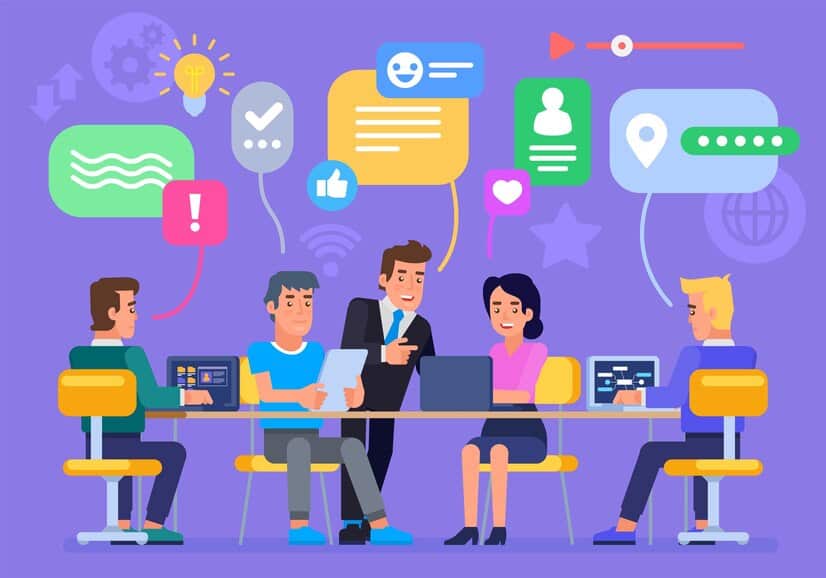
Did you know that disengaged employees cost companies a staggering $3,412 per person annually? According to a Gallup survey, only 13% of employees globally feel engaged in their jobs, highlighting a pressing need for innovative approaches to enhance interaction within organizations.
Interaction and gamification are transforming the way organizations communicate internally. By combining two-way participation with engaging game-like elements, companies are turning routine messages into motivating experiences that build connection, collaboration, and commitment.
Traditional internal communication methods often face significant challenges. They typically involve a one-way information flow, where information is disseminated from management to employees without sufficient avenues for feedback or interaction. This can lead to disengagement and a lack of enthusiasm among employees, ultimately affecting morale and productivity.
What’s the solution? Internal communication with gamification! This concept involves applying game-design elements and principles in non-game contexts, such as internal communication platforms and collaborative projects, to motivate participation and enhance engagement. By incorporating elements like challenges, rewards, and friendly competition, gamification can transform mundane communication into an interactive and enjoyable experience for employees, ultimately fostering stronger connections and driving organizational success.
In recent studies, gamification in workplaces has shown impressive gains in engagement and retention. One source states that gamified experiences can boost user engagement by 100%–150% compared to traditional non-gamified methods.
According to AmplifAI, the global gamification market is valued at USD 15.43 billion and is expected to grow to over USD 48.72 billion by 2029.
In internal contexts, researchers have reported that well-designed gamification can increase content participation and collaboration by over 60% and improve skills retention by 40%.
These numbers make it clear: when interaction is gamified thoughtfully, it’s not just “fun and games” — it can drive real behavioral change and communication impact.
Interaction, in the context of internal communication, refers to the exchange of information, ideas, and feedback between employees and across different levels within an organization. Unlike traditional one-way communication, interaction involves a dynamic and ongoing dialogue where employees actively participate, contribute, and collaborate.
The importance of internal communications and interaction within organizations is manifold:
From a psychological perspective, interaction plays a critical role in fulfilling basic human needs for social connection and belonging. When employees engage in meaningful interactions with their peers and leaders, they experience a sense of purpose and significance within the organization. This sense of belonging enhances motivation and commitment, leading to higher levels of individual and collective performance.
Because internal communication is special (not just marketing), here are important do’s and don’ts:
• Align game mechanics with real objectives: Make sure badges, points, and challenges drive desired behavior (e.g. knowledge sharing, collaboration), not just clicks.
• Avoid over-competition: Leaderboards can demotivate low performers. Use tiered or grouped leaderboards to balance competition and fairness.
• Reward consistency, not just peaks: Give points for sustained participation, not just one-off extremes.
• Balance extrinsic and intrinsic motivation: Gamification should support internal purpose, not overshadow it. Overreliance on points can erode intrinsic motivation. :contentReference.
• Be mindful of fatigue: Too many challenges or constant “gaming” can overwhelm users. Schedule quiet windows or rotate activity types.
• Monitor unintended behavior: People may game the system (e.g. clicking articles without reading) — use analytics to spot these patterns and adjust.
• Ensure inclusivity: Not all employees will engage the same way — offer multiple interaction options (quizzes, polls, challenges, social sharing).
• Iterate based on feedback: Collect feedback and usage data; drop or adjust mechanics that don’t resonate.
When done with care, gamification transforms internal communication from passive broadcast to active engagement.
Gamification for internal communication involves applying game-design elements and mechanics to non-game activities within an organization to make them more engaging, interactive, and enjoyable for employees.
This approach leverages elements commonly found in games, such as points, badges, leaderboards, challenges, and rewards, to motivate participation and drive desired behaviors among employees.
The incorporation of internal communication with gamification elements can significantly enhance engagement. Here are some employee engagement gamification activities to try:
Examples of gamified communication channels include:
By leveraging points, badges, leaderboards, and challenges, organizations can make communication more interactive, rewarding, and conducive to fostering a culture of participation and collaboration.
The power of play extends far beyond the realm of entertainment. By incorporating internal communication with gamification, you can unlock a treasure trove of benefits for both your employees and your organization:
Now that we’ve explored the potential of gamification, let’s delve into the nitty-gritty of crafting an effective strategy. Designing an effective gamified communication strategy involves careful planning and consideration of specific goals, appropriate game mechanics, simplicity, meaningful rewards, and ongoing feedback. Here’s a step-by-step guide to creating a successful gamification strategy for internal communication:
Gamified communication represents a transformative approach to enhancing internal communication within organizations. By integrating game-design elements into everyday interactions and activities, organizations can unlock numerous benefits that contribute to a more engaged, motivated, and cohesive workforce. To implement an effective gamification strategy, organizations must establish clear goals, select appropriate game mechanics, and keep the experience simple and user-friendly.
Gamification supports internal communication by increasing employee engagement through interactive elements like leaderboards, points, and badges. It enhances learning and retention by making training more memorable, fosters collaboration through team-based challenges, and provides instant feedback for continuous improvement.
Success can be measured through metrics such as increased engagement levels, completion rates of activities or training modules, participation in company events, and improvements in knowledge retention or employee satisfaction.
Challenges may include designing game mechanics that appeal to all employees, avoiding excessive competition or pressure, maintaining interest over time, and ensuring that the gamification strategy aligns with broader organizational goals and values.